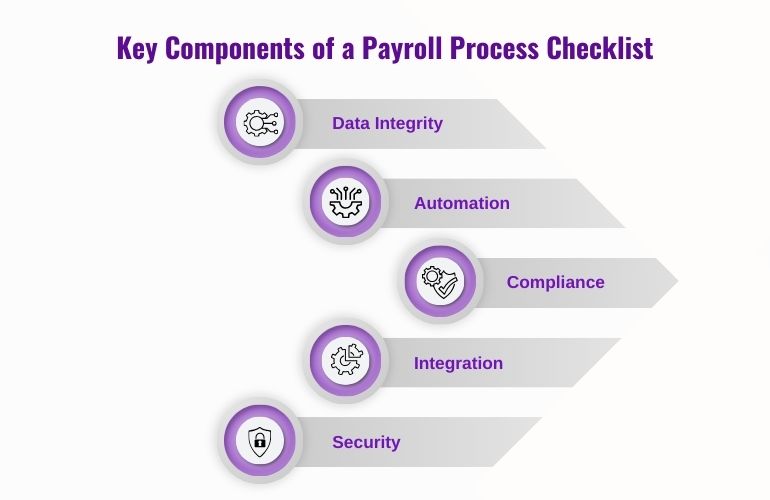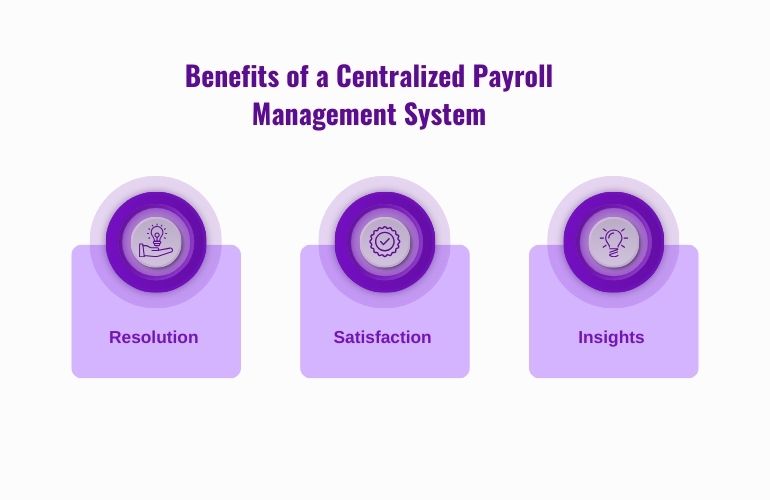As we move towards 2025, the shift towards a digital-first, remote-friendly workforce isn’t just a trend—it’s a paradigm shift that’s redefining how organizations operate. In this new era, payroll process software isn’t just a tool; it’s a strategic necessity that HR leaders must leverage to stay competitive. This evolution goes beyond simple upgrades; it requires a deep commitment to streamlining processes, ensuring robust compliance, and elevating the employee experience like never before.
Recent studies reveal that 47% of companies are planning to significantly boost their investment in HR technology by 2025, with payroll systems at the forefront of this transformation. So, are you ready to keep pace? The answer lies in mastering a comprehensive payroll checklist that aligns with the demands of the modern HR landscape. Here’s the ultimate payroll process software checklist every HR leader needs to navigate the rapidly changing payroll ecosystem in 2025.
1.What HR Leaders Should Know
At its core, payroll process software is a solution designed to simplify and automate payroll management, integrating various HR functions to enhance accuracy, compliance, and employee satisfaction. It does more than just calculate wages; it’s an essential tool that supports key performance indicators (KPIs) and helps HR leaders align payroll operations with company policies and legal requirements.
A robust payroll process software should offer:
- Automation to reduce manual tasks, improving both accuracy and efficiency.
- Compliance support to adhere to evolving tax and labor laws, a critical aspect as regulations become more stringent globally.
- Employee Data Integration to streamline processes, from onboarding to payroll execution.
As we head into 2025, payroll software that supports HR onboarding processes and integrates payroll app functionalities is a must-have for every HR leader.
2.The Payroll App Advantage in 2025
In 2025, payroll apps are set to revolutionize the payroll experience by providing seamless access to payroll information for both employees and HR teams. These apps allow employees to view pay stubs, access tax documents, and monitor benefits information in real-time, improving transparency and satisfaction.
With mobile accessibility and self-service options, payroll apps not only reduce administrative tasks but also empower employees. For HR teams, this means fewer inquiries and smoother payroll processes. A well-integrated payroll app can reduce payroll errors by 30%, saving valuable time and resources.
Key features of a payroll app in 2025 include:
- Real-time access to payroll data and history.
- Self-service options for updating personal information and accessing tax documents.
- Notifications for salary disbursements, tax deductions, and benefits updates.
By reducing administrative overhead, payroll apps contribute to a more streamlined payroll process, ensuring both HR teams and employees have easy access to the information they need.
3.Key Components of a Payroll Process Checklist
For an efficient payroll process, having a detailed checklist is crucial. Here’s what HR leaders should focus on:
- Employee Data Management: Accurate and up-to-date employee data is the foundation of any payroll system. Ensure that salary details, tax information, and benefits are consistently updated and verified.
- Automated Payroll Calculations: Automation is critical for calculating wages, overtime, deductions, and bonuses accurately. Manual calculations are not only time-consuming but prone to errors. Automating this step can improve payroll accuracy by up to 95%.
- Compliance with HR Policies and Legal Requirements: Aligning payroll processes with HR policies and legal standards is essential to avoid compliance issues. In 2025, payroll software that can keep up with evolving tax and labor regulations will be indispensable.
- Integration with Time and Attendance Systems: Integrating time tracking apps with payroll helps HR avoid discrepancies in attendance data and ensures that employees are paid accurately.
- Secure Data Handling and Privacy Measures: With the rise in cybersecurity concerns, protecting payroll data is paramount. Ensure that the payroll system adheres to data privacy standards, with encryption and access control protocols in place.
A payroll checklist ensures consistency and helps HR leaders avoid errors, leading to a smoother payroll experience for all.
4.The Role of HR Onboarding Processes in Payroll Efficiency
A smooth HR onboarding process is essential for efficient payroll management. When onboarding is seamless, new employees can be integrated into the payroll system quickly, reducing the risk of errors. Efficient onboarding also enhances the employee experience, setting the tone for future interactions.
Steps to improve onboarding efficiency include:
- Gathering payroll data (e.g., bank details, tax information) early in the onboarding process.
- Setting up direct deposits and automating the process for faster payroll integration.
- Aligning onboarding processes with payroll policies to reduce manual entries.
Aligning HR onboarding processes with payroll ensures a seamless transition for new hires, minimizing errors and fostering positive experiences from day one.
5.Benefits of a Centralized Payroll Management System
A centralized payroll management system offers HR leaders a unified view of all payroll activities, enhancing transparency and operational efficiency. Real-time monitoring allows HR teams to identify issues proactively, improving decision-making around budgeting, staffing, and compliance.
Advantages of a centralized payroll system include:
- Faster issue resolution due to real-time tracking of payroll activities.
- Enhanced employee satisfaction as issues can be addressed promptly.
- Improved strategic HR decisions by providing insights into payroll trends and costs.
Centralization is critical in today’s fast-paced work environment, helping HR leaders manage payroll processes more effectively and ensuring compliance with HR policies and regulations.
6.Regular Audits and Updates to HR Policies
In 2025, conducting regular payroll audits is essential for identifying inconsistencies and ensuring that payroll systems remain compliant with legal standards. Payroll audits help HR teams catch errors before they become costly issues.
Key audit practices include:
- Regularly reviewing payroll entries and calculations.
- Verifying compliance with tax laws, labor laws, and internal HR policies.
- Keeping payroll software updated to align with the latest standards and requirements.
By maintaining updated HR policies, HR leaders can prevent potential payroll issues, ensuring that their systems remain compliant and aligned with current regulations.
7.The Future of Payroll Apps: Trends and Innovations for 2025
Payroll technology is continuously evolving, and 2025 is set to bring significant innovations in payroll apps. AI-driven payroll analytics, predictive insights, and advanced security protocols are some of the trends shaping the future of payroll management.
Predicted trends include:
- AI-powered analytics that provide insights into payroll trends, helping HR leaders make informed decisions.
- Enhanced data security protocols to protect payroll data from cyber threats.
- More personalized payroll processes, driven by predictive analytics and automation.
As these technologies advance, payroll apps will support a more personalized, accurate, and efficient payroll management system, empowering HR leaders to handle payroll tasks more effectively.
Conclusion
In 2025, the payroll process software landscape is more complex than ever, and having a detailed payroll checklist is essential for HR leaders aiming to stay ahead. By integrating payroll apps, focusing on compliance with HR policies, and leveraging advanced security and analytics, HR teams can create an efficient, compliant, and employee-focused payroll process.
For HR leaders, adopting forward-thinking payroll strategies is no longer optional. As businesses embrace digital transformation, an effective payroll process will be a cornerstone of HR management, driving operational efficiency, reducing errors, and ensuring regulatory compliance.
By following this comprehensive payroll process checklist, HR leaders can confidently navigate the evolving payroll landscape in 2025 and set their organizations up for success.






